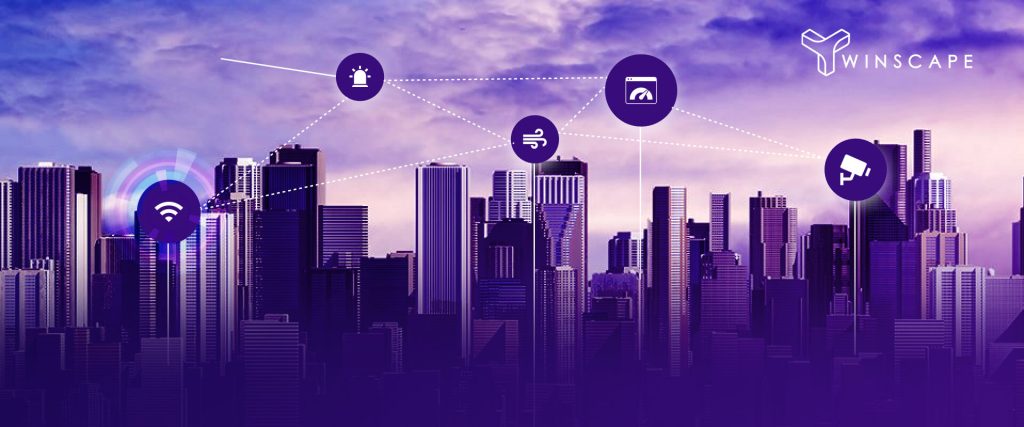
Written by Elizabeth
For the sustainability revolution to take off, leaders must serve as stewards of change, ushering in a cultural transformation across all levels of the organisation.
Picture yourself as an executive of a large airline company, flying to an important meeting that will determine your company’s long-term future. What’s on your mind? Initially, you’d hope for a seamless flight. Then, as you gaze over the sky, your reflections would centre on ensuring the resilience and sustainability of the business. Now, having safely landed, your meeting awaits.
Surprisingly, the leadership principles that secure a safe landing—referred to as visible, felt safety leadership—share significant similarities with leadership ensuring the company’s sustained success takes off.
Visible, felt safety leadership has driven numerous organisations to success, with tangible outcomes such as saved lives, improved morale, and increased efficiency. These safety leadership principles not only offer immediate benefits but can also provide a blueprint for the sustainability leadership revolution. This means organisations and leaders don’t have to begin from scratch.
How (In)Visible Leadership Drives Sustainability in an Organisation
Globally, organizations are adopting sustainability leadership, but implementing their vision efficiently is the challenge. Leaders need a holistic approach to foster a culture of care, accountability, and continuous improvement, looking beyond short-term gains for sustainable outcomes. This is where both visible and invisible leadership principles come into play.
Let’s start by establishing what visible and felt (invisible) safety leadership is:
- Visible safety leadership can involve explicit actions such as site walkarounds, involvement in safety training, or the implementation of safety protocols.
- Felt (invisible) safety leadership, on the other hand, is subtle but profound as leaders exert safety through decisions, behaviours, and attitudes.
Similarly, the concept extends to (in)visible sustainability leadership:
- Visible sustainability leaders can include those advocating for sustainability initiatives, teams working on sustainability projects, running sustainability training, and executives communicating their sustainability targets to stakeholders.
- Invisible sustainability leaders exert influence through decisions, attitudes, and values. This could be achieved by integrating sustainability considerations into daily decision-making processes and upholding environmentally responsible behaviours.
When sustainability leadership assumes a subtle rather than forceful role, it provides room for others to contribute and participate. Although individuals may not receive explicit recognition, this leads to increased opportunities for engagement and a profound impact on promoting a culture of sustainability.
(In)Visible Sustainability Leadership: An Action Plan for Executives and the Board
Leaders are at the heart of the sustainability transformation in their organisations. Beyond compliance and regulation, they are stewards of transformation. They empower others to embrace change—creating a culture of care, ownership and accountability throughout the entire organisation. The action plan outline below paraphrases the framework describe by David Grayson, Chris Coulter, and Mark Lee in their book, “The Sustainable Business Handbook.”
The initial step for organizations to implement (in)visible sustainability leadership is to evaluate the status-quo in sustainability leadership proficiency across the organisation with the desired attitudes and skills. Identifying specific challenges related to sustainability, drawn from recent incidents, audit findings, or issues raised by stakeholders and customers, can help create valuable insights. A similar approach is used when evaluating an organisation’s safety culture or culture of the board and executive team.
Once this is assessment is complete, the next step is to scale sustainability leadership across all levels of the organisation. The course of action should encompass the concepts of care, accountability, and continuous improvement, ensuring the organisation not only protects the well-being of its employees but also ensures the long-term viability of its operations.
While the approach to embedding (in)visible sustainability leadership varies across organisational levels and the board level, some principles are universal:
- At the board level, the goal should be to achieve a well-rounded approach, considering a balance of non-executive directors that are well-informed in sustainability practices and principles, and to shake up board dynamics and culture (e.g. consult from youth). Board members should also self-educate and attend sustainability training and regularly share hot topics on sustainability. A comprehensive plan for boards is outlined in the publication, “Boards: Stepping Up as Stewards of Sustainability.”
- Senior leaders could encourage their staff to seek out short-term social enterprise secondments or volunteering opportunities as well as incentivize sustainability leadership training. Middle management should be encouraged by senior leaders to uphold sustainability through the incorporation of sustainability KPIs into targets and decision-making for promotions. Additionally, senior leaders themselves must cultivate the skills to convey their business purpose, decisions and plans as well as actively stay abreast of the changing regulatory landscape.
Brief discussions on a topic goes a long way. As leaders, and just like our executive of a large airline company attending their next meeting, having a “safety” moment or “sustainability” moment can spark thoughtful contemplation and inspire (in)visible sustainability leadership. Even for those who find this unfamiliar territory, leaders can begin these discussions by exploring the following topics:
- Would it be beneficial to designate a Chief Sustainability Officer, and how should we structure sustainability and health, safety, and environment (HSE) within the organisation?
- What are employees’ annual goals and performance agreements saying about sustainability activities and targets? How can we encourage the incorporation of sustainability target setting? Have we integrated sustainability performance targets into the bonuses and compensation?
- Does our organisation encourage individual safety and sustainability pledges to encourage employees in mentoring others and supporting wellness, inclusion and sustainable practices?
- How does our organisation present to potential job applicants in terms of sustainability, and how is sustainability encouraged during the recruitment process?
- How do we want to communicate sustainability KPIs across the organisation?
- Are there systems in place that encourage the sharing of sustainability best practices across the organisation?
Whether orchestrating the right leadership mechanisms for a safe airplane landing or spearheading a sustainability agenda, leadership stands at the core of forging organizational excellence and resilience. Senior leaders, as stewards of change, assume a pivotal role in ingraining sustainability throughout the organization, empowering their people, addressing pressing global challenges, and ensuring enduring business continuity.
Embedding Sustainability Through Digital Tools and Data-Driven Leadership
To truly embed (In)visible Sustainability Leadership across an organization, leaders must go beyond advocacy and policy. They need reliable, real-time data, AI-powered insights, and scalable tools that make sustainability tangible for every team and decision-maker. Digital solutions are essential for transforming sustainability from an abstract concept into everyday action. By leveraging technology for tracking emissions, reporting ESG metrics, and educating teams, leaders can create visibility around progress while reinforcing accountability—even when that leadership operates quietly in the background.
This is where HyperNym Sustainex plays a pivotal role. As an advanced sustainability intelligence platform, Sustainex equips organizations with the tools they need to lead effectively—both visibly and invisibly. Its automated reporting features, interactive dashboards, and AI-driven analytics simplify the complexity of sustainability data, making it easier for leaders to monitor progress, comply with regulations, and drive strategic decisions. Sustainex doesn’t just support leadership—it amplifies it, enabling executives and teams to embed sustainability into operations, supply chains, and employee behaviors without friction. For organizations ready to scale their impact, Sustainex is the ultimate digital companion on the journey to a more sustainable future.
Conclusion
Beyond tools, achieving this demands a profound commitment to radical mindset shifts and the courage to advocate for change. Such transformative leadership requires the right kind of leader and an ongoing commitment to continuous leadership development.




